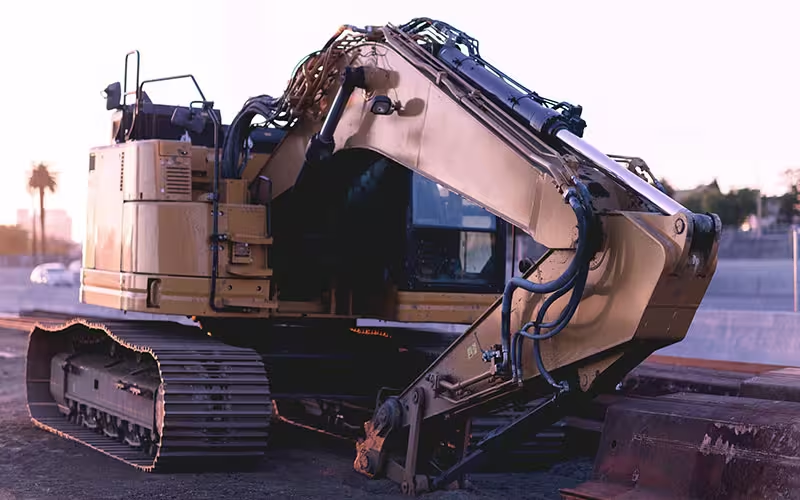For Commercial Site Development Tulsa, see our main page here or call us at 918-695-9461.
What is Commercial Site Development?
Commercial site development involves preparing land for business construction projects. This process includes excavation, grading, utility installations, and zoning compliance. A successful project ensures that the land meets all structural and regulatory requirements before construction begins.
Key Phases of Commercial Site Development
Every commercial project follows a structured development process. Below are the key phases involved.
Site Selection and Feasibility Study
Choosing the right location is critical. Developers analyze factors such as soil stability, flood risks, accessibility, and zoning laws. A feasibility study determines whether the chosen site supports the intended business operations.
Design and Planning
During this phase, architects and engineers create blueprints for the development site. They consider drainage, utility lines, and road access. Compliance with local regulations ensures a smooth permit approval process.
Land Preparation and Excavation
Before construction starts, the land must be cleared, leveled, and excavated. Engineers remove obstacles such as trees, rocks, and old structures. Grading ensures proper drainage and foundation stability.
Utility Installation
Utility infrastructure is essential for commercial properties. Water, sewer, electrical, and communication lines must be installed according to building codes. The integration of modern, eco-friendly solutions can reduce long-term operational costs.
Permit Approval and Compliance
Zoning laws and environmental regulations vary by location. Developers must secure permits for stormwater management, grading, and utility connections. Inspections verify that work complies with regulations.
Final Site Preparation and Road Access
Once utilities are installed, paved roads, parking lots, sidewalks, and drainage systems complete the development. These elements enhance accessibility and improve the site’s value.
Why Choosing the Right Commercial Site Development Team Matters
Experienced developers ensure efficient project completion while minimizing costly delays. A skilled team understands local regulations, eliminating setbacks caused by permit issues. Additionally, expertise in drainage, environmental sustainability, and infrastructure planning improves long-term site functionality.
Optimizing Project Costs
Cost overruns can derail any project. Proper planning and budget allocation prevent unexpected expenses. Experts help developers find cost-effective materials and construction methods without compromising quality.
Reducing Environmental Impact
Modern developments emphasize eco-friendly designs. Through stormwater management systems, energy-efficient utilities, and green landscaping, developers minimize environmental disruption while cutting future operating costs.
How Commercial Site Development Tulsa Has Evolved
Over the past decade, Tulsa has experienced significant growth in commercial development. Emerging industries, such as logistics and technology, drive demand for well-planned spaces. As a result, developers now use advanced techniques to improve project efficiency.
Technology and Automation
Technological advancements have streamlined commercial site development in Tulsa. Drones conduct topographical surveys, while AI-driven forecasting tools assist in risk assessment. These innovations enhance project accuracy and reduce delays.
Green Building Trends
Developers prioritize green building initiatives by incorporating energy-efficient infrastructure. Sustainable materials, solar power integration, and rainwater harvesting systems are now common in commercial projects.
Common Challenges in Commercial Site Development
Despite careful planning, site development projects can face unexpected challenges. Here are some common obstacles developers must address.
- Unforeseen Soil Conditions: Soil instability can lead to foundation issues, requiring additional reinforcement.
- Weather Delays: Heavy rain can slow excavation, increasing project timelines.
- Regulatory Hurdles: Changes in building codes or zoning laws can require developers to adjust their plans.
- Utility Accessibility: Remote areas may lack essential utility connections, leading to increased development costs.
How to Ensure a Successful Commercial Site Development Project
Careful preparation and strategic decision-making lead to successful project completion. Here are key steps to maximize success.
Work with Experienced Professionals
Collaborating with an established commercial development team ensures compliance, efficiency, and quality outcomes. Professionals bring expertise in zoning regulations, utility integration, and foundation stability.
Invest in Site Surveys Early
Early-stage site analysis prevents costly surprises. Soil testing, topographical mapping, and environmental impact assessments provide insight into potential risks.
Plan for Long-Term Growth
Future-proofing a commercial property increases its value. Developers should consider space for expansion, upgraded utilities, and transportation access when planning a site.
Frequently Asked Questions
How long does Commercial Site Development Tulsa take?
Timelines vary based on project size and complexity. Smaller developments may take a few months, while large-scale projects can span multiple years.
What permits are required for Commercial Site Development Tulsa?
Developers must secure grading, stormwater management, and zoning permits. Some projects require environmental impact assessments depending on location.
How does weather impact Commercial Site Development Tulsa?
Rain and extreme weather can delay excavation and utility installations. Proper scheduling and contingency plans help mitigate disruptions.
Is sustainable commercial site development more expensive?
Initially, green initiatives may increase costs. However, energy-efficient infrastructure reduces long-term expenses, making it a cost-effective investment.
What factors determine site feasibility?
Soil conditions, zoning laws, accessibility, and utility availability all influence whether a site is suitable for commercial development.
Follow us on Facebook here.

